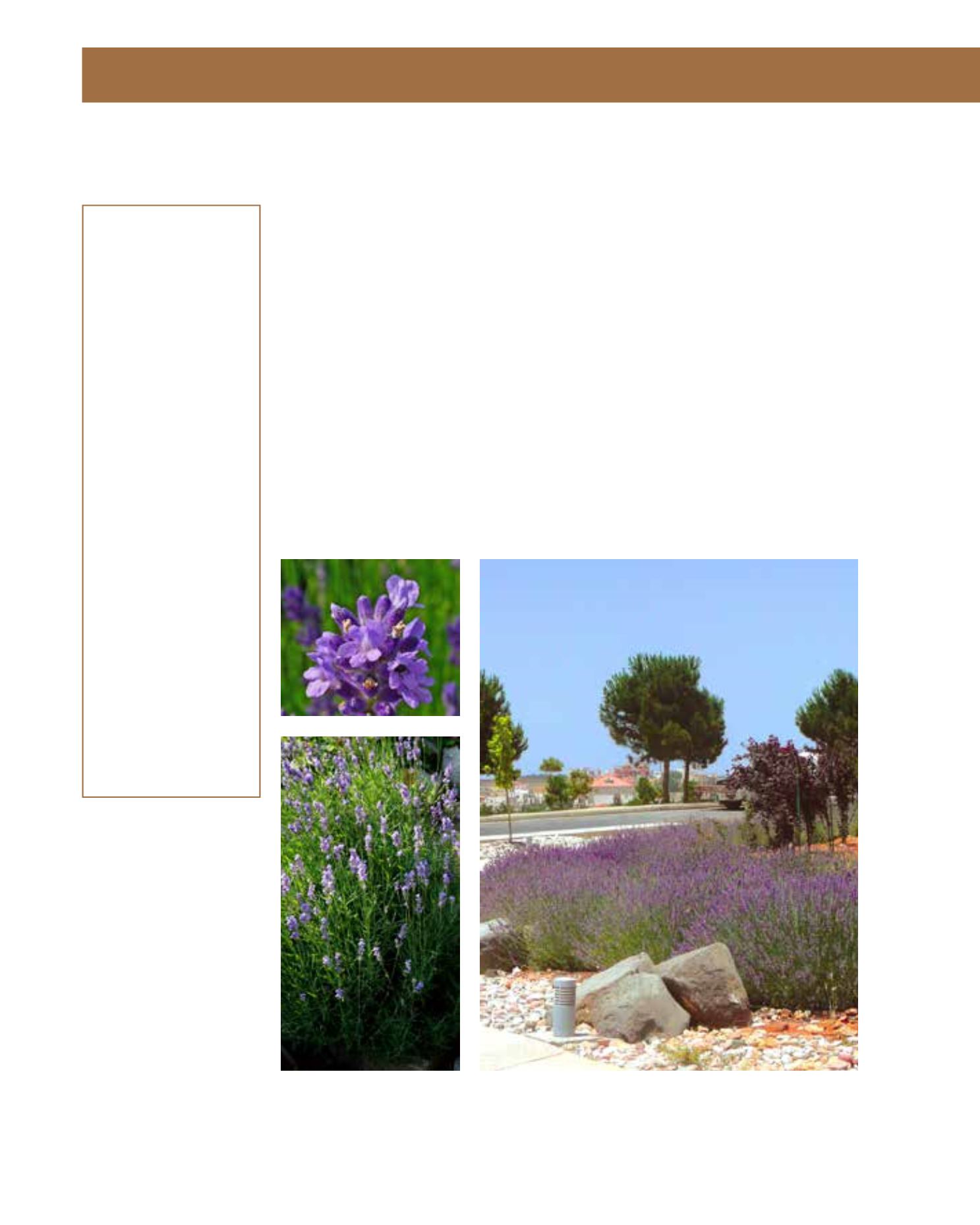

GENERAL
Origin
:
sub-Mediterranean,
Mediterranean
Vigour
:
slow-growing
Humidity
:
semi-arid, semi-
humid
Propagation :
sowing and
pricking out,
cuttings
Maintenance :
moderate
CONDITIONS
Urban climate :
resistant
Dessication :
resistant
Stagnant water :
vulnerable
Irrigation
:
medium
Salinity/ppm :
low (1000 ppm)
Hardiness
:
-25°C
SHAPE
Type
:
sub-shrub
Height
:
0.4 m-1 m
Spread
:
0.6 m-1.4 m
Foliage
:
semi-evergreen
FLOWER
Colour
:
blue, violet
Size
:
10 cm - 15 cm
Period
:
June - August
Smell
:
scented, aroma,
strong, pleasantly
scented, gives
freely of its scent,
leaf, flower, spicy
FRUIT
Type of fruit :
nutlet
Fruit size
:
0.2 cm
Toxicity
:
edible when
processed
Lavandula angustifolia is the common Lavender, a sub-shrub with a strong scent. The herb is
indigenous to the Mediterranean, Alpine, Balkan and Caucasus. Lavender can also be found
near Taif in the Asir Mountains, but is observed in Thumamah Natural Park in ravines as well.
Maintained, it usually grows 40 cm high, but it can reach a height of 100 cm. Regularly pruning
will keep the dwarf shrub densely branched, since otherwise it tends to become squarrose. In
June to August, the typical strong-scented, blue or violet, ear-like flowers appear. The semi-ever-
green leaves are lanceolate and silver-grey. The roots are shallow to deep, depending on the water
supply. Lavender grows naturally on rocky silty soils. Because of its semi-evergreen leaves, the
herb likes sufficient air humidity. The saline content of irrigation water should be low. Lavender
can be propagated by sowing and pricking and with cuttings. In southern Europe, lavender is
cultivated for the perfume industry. Lavender is used for medical reasons to cure inner agitati-
on or digestive problems. For landscape design, this appealing aromatic herb can be utilised as
grouped or massed planting, and as groundcover. It also fits in well in rock or steppe gardens, on
wall tops or as small hedges as border plantations. In Arriyadh, Lavender can be used in private
gardens, urban areas, park planting and open public space. Lavender does also well in containers
and as topiary planting, and attracts bees.
187
Common Lavender
Lavandula angustifolia,
Lamiaceae
















